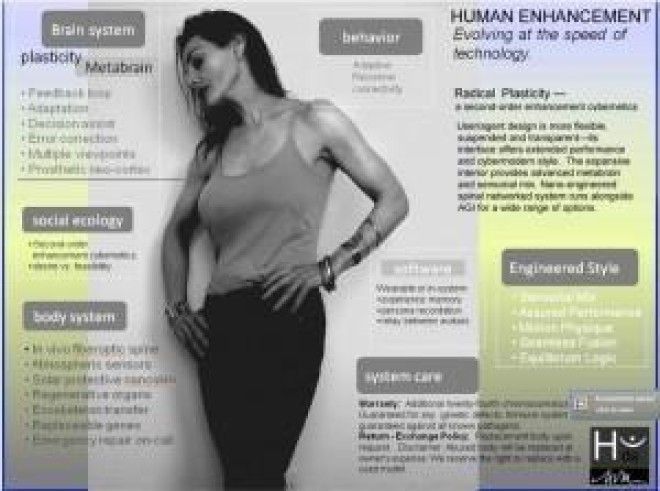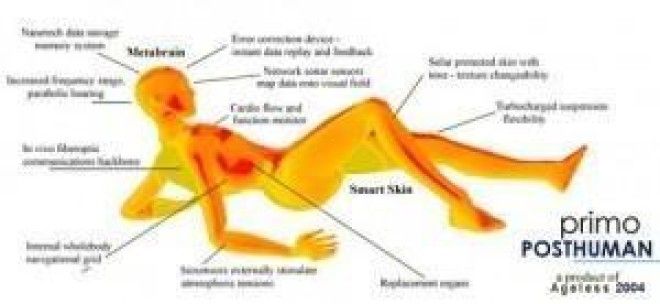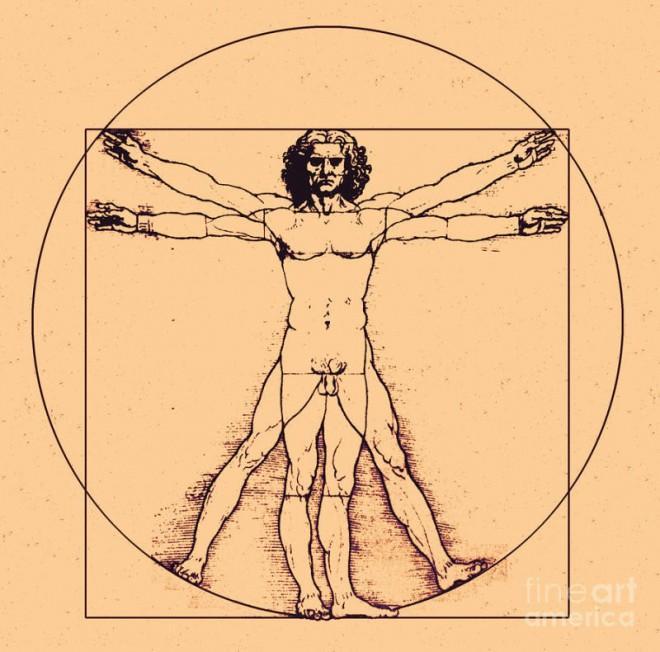
Natasha Vita-More, has a futuristic proposal for the next gen human, the Primo Posthuman – is this the face of our future? With a Ph.D. focused on human enhancement and radical life extension, an M.Phil. in Media Design, and a Bachelors degree in Fine Art, she certainly has an educational background well suited to her vision, and that vision is, to put it lightly, quite deep. Delving into Vita-More’s numerous papers on the nature of the future of humanity is immersion in some very dense reading, indeed. Consider her explanation of what the concept entails:

“I suggest an approach to the artistic search for a new image, founded on scientific probability and inspired by technological prowess. This approach is a disciplined rationalism of the modernist’s enlightenment of progress and naturalism, and the multi-perceptual character of postmodernism which opens up pathways to express humanity in novel forms. It is the hyper-modern approach of “Primo Posthuman,” as a future body prototype, that combines design with biotechnology.”
Vita-More espouses the use of technology governed by a tight ethical valve. The beauty and curse of such an arrangement is, of course, one’s definition of ‘ethical.’ She and other members of the Humanity+ organization have published a manifesto outlining their take; the gist of this is best summarized in the phrase, “Although all progress is change, not all change is progress,” and to their credit, rather than deciding in detail what the ethics in question should be, they opted to paint a general outline with a rather broad brush; “Policy making ought to be guided by responsible and inclusive moral vision, taking seriously both opportunities and risks, respecting autonomy and individual rights, and showing solidarity with and concern for the interests and dignity of all people around the globe.”
Vita-More’s view of how all this should manifest is the Proto Posthuman. Her perspective, like her education, is a synthesis of technology and art, “a design comprised of elegant strokes.” From plastic surgery and prosthetics, to chemical enhancement and genetic
engineering, she sees the human body first as a work of art, and secondly as a platform for wide and varied improvements.

